The global SaaS market was valued at $161.2 billion in 2021. According to forecasts, it is expected to reach $382.59 billion by 2030, with an average annual growth rate of 10.08%.
The reason for such growth is simple: everyone benefits from building a SaaS product. Thanks to the numerous advantages of SaaS, companies get an inexpensive and efficient app, while customers get a convenient cloud-based platform with remote access.
In this article, experts from Lampa Software will guide you on how to build a SaaS application from scratch.
Identifying the Target Market and Defining Product Goals
Every project starts with an idea. However, you can't immediately proceed with its implementation, as the finished product may not have demand. It is crucial to analyze the target market, identify consumers' pains and interests, and study competitors and their offerings. You can confirm, refute, or create a new hypothesis based on the information gathered.
The first stage includes the following steps:
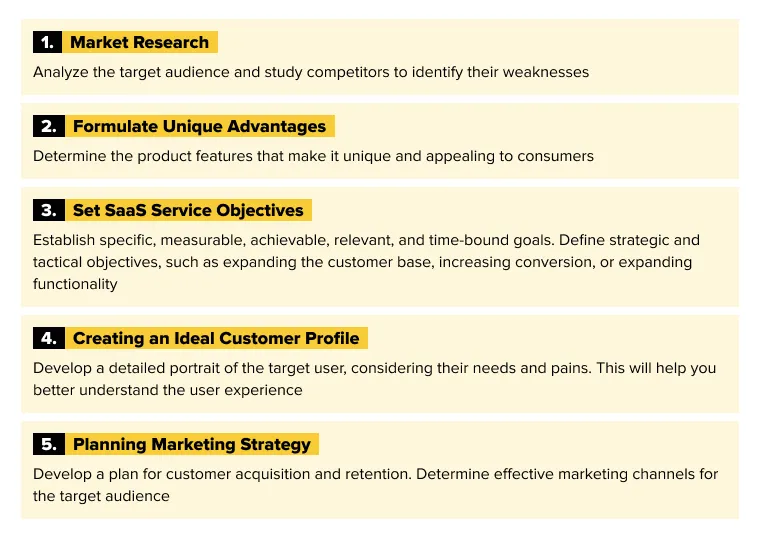
All the steps mentioned above play a crucial role in building a SaaS, as a clear understanding of the market and user needs is the foundation for subsequent stages.
Planning and Strategizing
How to build a SaaS product without a clear planning and development strategy? It's simply not possible. These aspects ensure the effective execution of subsequent development stages and enhance the chances of successfully introducing the product to the market.
At this stage, you should take the following steps:
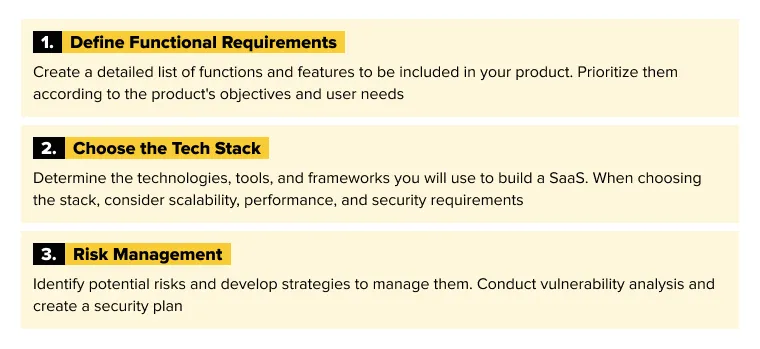
Therefore, you will form a strategic foundation for development and provide the team with a clear plan to achieve goals.
Designing the User Interface (UI) and User Experience (UX)
A SaaS project must be original and user-friendly. Therefore, special attention is given to designing the interface.
How to build a SaaS product with a user-friendly and appealing interface? To achieve this, you need to take the following steps:
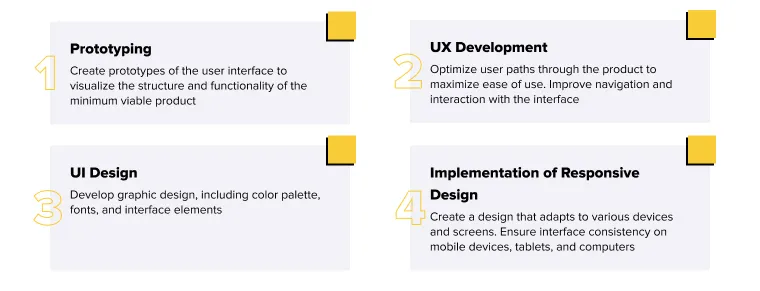
Proper UI/UX design is a key factor in the success of a SaaS product, as the combination of aesthetics and usability is crucial for every user.
Developing the Backend Infrastructure
This stage is fundamental to creating a SaaS product, as the backend is responsible for data processing, business logic, security, and interaction with the database.
It requires a comprehensive approach, including the following steps:
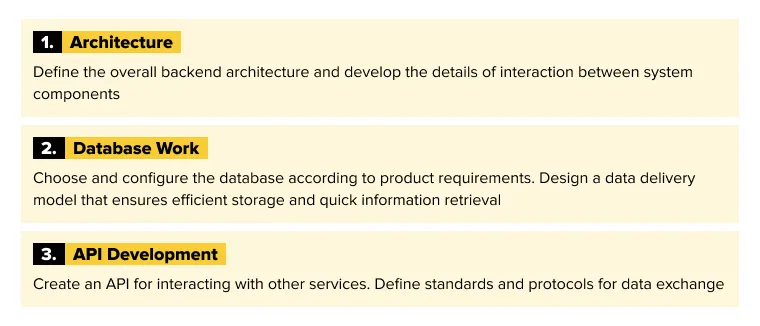
Backend infrastructure development must adhere to security measures and consider the possibility of horizontal scaling to ensure stability under increasing loads.
Implementing Core Functionality
This stage is crucial as it allows the translation of the concepts and ideas presented in the previous stages into real functional elements of the product.
How to create SaaS application with powerful functionality? Let's consider some steps:
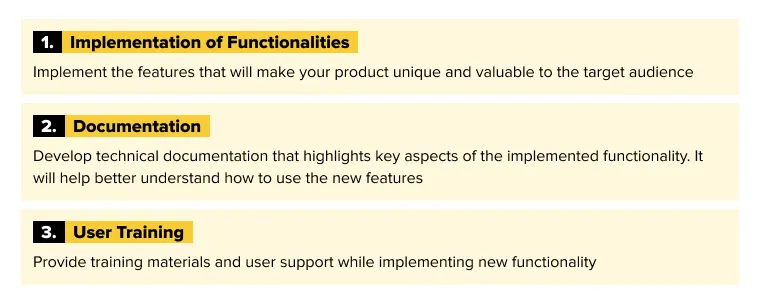
At this point, the core of the product is formed, laying the foundation for its further growth and development. Skillful implementation of necessary functions lets you create a solution that best meets the needs of users and the business model.
Enabling Multi-Tenancy and Customization
To make a SaaS product adaptive and accessible to a wide audience, customization and multi-user mode should be taken care of.
For this, the following steps should be taken:
Development of Multi-Tenant Architecture: Implement an architecture that provides access to the product for multiple user groups.
Choosing a Multi-User Approach: Define the model, whether it will be separate instances of application for each client, multiple SaaS products for all clients, or a hybrid approach.
Customization: Allow users to implement their own business rules, change workflows, etc.
Multi-user access to custom software will successfully meet the needs of different organizations and business models.
Implementing Security Measures
Data security and information confidentiality are essential in developing traditional software and SaaS solutions. This protects the product from potential threats and builds user trust in the product.
How to develop a SaaS product that meets all necessary security measures? This involves the following steps:
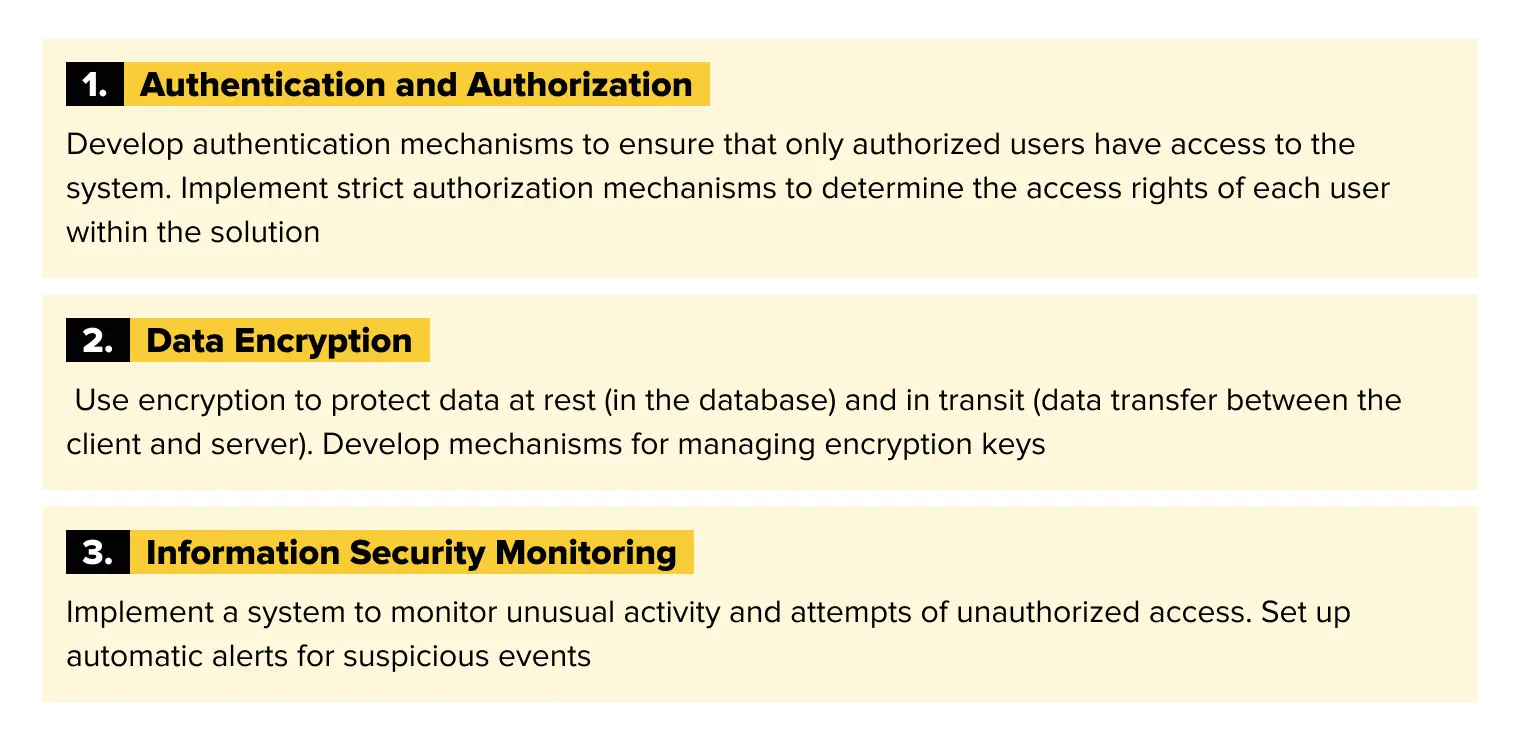
Additionally, ensure continuous updating of security measures to respond promptly to changes in threats and provide reliable protection in the long term.
Testing and Quality Assurance
Testing a SaaS application during the development process plays a key role. You ensure the stable operation of the product and its compliance with high standards.
Typically, the following types of testing are carried out:
Unit Testing: Checking individual components (units) of the product to determine their correctness in isolation.
Integration Testing: Verifying the interaction of different system components to ensure the correctness of their joint operation.
Functional Testing: Checking the product for compliance with functional requirements.
Performance Testing: Evaluating the product's performance under load to determine if it can efficiently handle the expected number of users.
Effective testing guarantees the reliability and stability of the SaaS product, which is important for satisfying customer needs and successfully operating the solution in real conditions.
Deploying and Scaling the SaaS Product
The final stage in the development lifecycle of a SaaS solution includes deployment in a working environment and the implementation of measures for scaling.
Now you know how to create a SaaS. By completing all the steps, you ensure the uninterrupted and efficient operation of the product, as well as its readiness for further growth and changes in business requirements.
Continuous Improvement and Customer Support
These actions cover not only technical aspects such as updates but also provide reliable support, which is a critical element of the successful operation of a SaaS product.
It is a continuous process to constantly improve the SaaS product in line with changing user needs, market requirements, and technological progress. Continuous feedback and active customer support create the foundation for the successful development of the digital solution.
Conclusion
Developing a successful SaaS product is a complex process that includes several stages, from identifying the target audience to continuous improvement and user support. Each stage is an integral part of the product lifecycle, and the correctness of implementation significantly influences its success.
Delegate the development to Lampa Software. Our development team knows how to create a SaaS product that is productive, user-friendly, multifunctional, and useful for the end user.